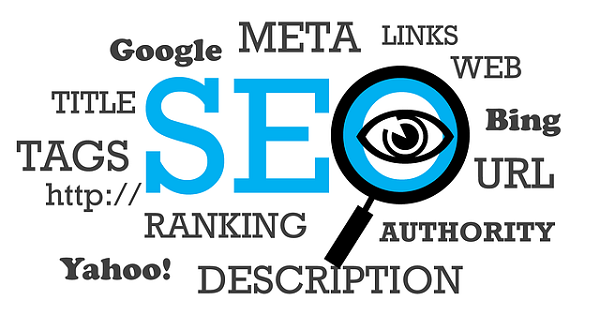Online marketing is a collaborative medium that is most successful when teams work together to achieve results. Marketing is a very broad term that has many moving parts underneath the umbrella. When these parts move in unison, the platforms are collectively positioned to deliver significant results.
Corey Collins of Search Engine Watch summarizes the goals of online marketing as improved visibility and awareness. Brands that successfully increase their visibility and awareness will improve the performance of all platforms such as email marketing, social media engagement, SERP rankings, organic search traffic, paid traffic, and reputations with influencers.
There are some areas where online marketing efforts overlap to achieve even higher ROI, particularly in regards to SEO and content. If your primary source of traffic is or intends to be through search, a strong plan that optimizes SEO with great content will help you reach your goal. We’ve put together a list of great tips that improve SEO and content strategies for the best marketing results.
1. SEO and Content Are Two Sides of One Coin
The most successful content marketing strategies incorporate SEO techniques to drive the best results. Content that is optimized for relevance, crawlability, and a positive user experience will engage with audiences on social media. Some marketers refer to this equilibrium as the holy trinity of digital marketing.
Google’s own refined algorithms altered SERP results. Updates like Panda, Penguin, Hummingbird, Pigeon, and the latest Phantom are all used by Google to reposition search engine rankings, and allow high quality sites to rank for specific search terms or keywords. Let’s take a look at some of the best ways to become an influential site.
- Curate, publish, and distribute content that boosts your brand’s reputation
- Identify which terms you already rank on and create more content to further build your authority
- Dissect lists of influencers, identify who you want to feature your content, and curate topics that appeal to them
- Add all relevant influencers to your email list
- Insert your best content into email newsletters to improve your brand’s chances to be featured elsewhere
SEO and content marketing are constantly evolving, erupting into massive industries that redefined online marketing. Learn how to position your brand within the ever-changing atmosphere and you will find success.
2. Create Content That People Want to Share
The term influencer marketing is a relatively new concept, but influencers are very important for teams invested in SEO and content. Marketers who successfully develop relationships with influencers can collaborate on a fresh piece of content, increasing the size of the audience as well as building credibility for your brand.
If you haven’t established these tight-knit relationships yet, don’t fret. The way to get on the radar of influencers is to create interesting content that intrigues thought leaders. When you have something that is unique, educational, or even unorthodox, you are far more likely to stand out amongst the chatter. Ideally an influencer will share or link to your content, which will be fantastic for SEO.
To begin thinking like a thought leader keep these points in mind:
- Educational content written in a fresh tone inspires audiences to share with friends or followers
- Content distributed across enough channels organically reaches influencers
- If influencers see the value in the content, they will be inspired to link to or engage with the material
- These links and engagement metrics are used by Google to improve SERP rankings
- Higher rankings make it easier for influencers to find and trust your site
Some of the points relate specifically to content while others are more identified by SEO. However, all the points are important to your overall strategy as successful content and SEO are co-dependent. Identify how influencer marketing is best for your brand and optimize each tip for a high return.
3. Remember the Technical Side of SEO
While content marketing influences SEO, there is another side to optimization that marketers must follow. Websites are very complex pieces of code and technical problems on any of your core pages can limit the potential value of your content.
Creating content strictly for the sake of having something to publish will get you nowhere if there are bugs on the site. Common problems include broken links, an unpolished sitemap, problems loading pages, and more recently, pages that are not formatted for mobile use. If Google detects these problems while crawling your site, you could be hit with a penalty that sends you plummeting down SERP rankings.
If you are new to SEO, quickly identify the difference between “white-hat” and “black-hat” tactics. These are terms created in the past few years following the release of Google’s algorithm updates like Panda and Penguin. Here are a couple of tips to stay on the “white-hat” side of SEO instead of falling into the trap of “black-hat” tactics.
- Conduct an internal site audit to identify any problems that hurt your SEO
- Remove any low quality or broken links that disrupt a user experience
- Always verify the source of a link you include within your own content
- When it comes to linking, quality is better than quantity. Target the influencers you want to reach in your strategy
- Monitor any upcoming Google updates. It’s better to remove a problem before an update than to be hit by a penalty
Once you complete your audit and are confident that Google will not identify any major bugs during a site crawl, you can begin publishing and distributing content. Remember to track and measure which pieces of content attract traffic or rank for specific search terms. Think like an SEO and you can add even more value to your content.

![[WA] Ultimate Content Marketing Kit](https://rockcontent.com/wp-content/uploads/2022/08/Content-Marketing-Kit-750x200px.jpg)







